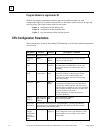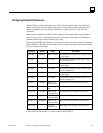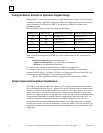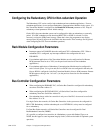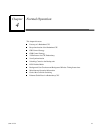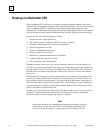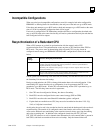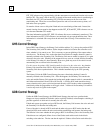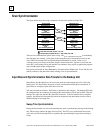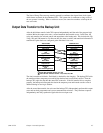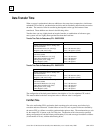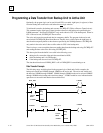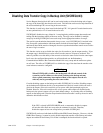
4-4 Series 90™-70 Enhanced Hot Standby CPU Redundancy User's Guide
–
May 2000 GFK-1527A
4
FST_EXE references for program blocks with the same name are transferred from the active to the
backup CPU. The result is that if one CPU is already in Run mode and the other is transitioning to
Run mode, the FST_SCN and matching FST_EXE bits are
not
set on the first scan of the
transitioning unit. These bits are considered system bits and set if one unit comes up alone, or if
both units come up together.
No transfer of data occurs at this point if both units are transitioning to Run mode. Instead, the
normal clearing of non-retentive data happens and the FST_SCN and FST_EXE references are set
as in the non-redundant CPU models.
The timer information and the FST_EXE %S reference bits are not continuously transferred. The
timer information and FST_EXE references are transferred only at resynchronization time. Timer
information is calculated each sweep from the universal Start of Sweep Time transferred every
sweep.
GHS Control Strategy
In the GHS Control Strategy, the Primary Unit (with bus address 31), is always the preferred CPU.
The Secondary Unit (with bus address 30) has outputs enabled to its Genius bus controllers at all
times, whether it is in control or not. This is necessary to prevent glitching of the outputs when a
switch occurs. The Primary Unit, on the other hand, must disable its outputs whenever control is
manually switched to the Secondary Unit. The Primary Unit must re-enable its outputs if it is again
selected as the active unit. Glitching of the outputs does not occur on a switch from the Secondary
to the Primary Unit when it is done manually. However a glitch may occur if the switch is made
automatically due to a failure in the Secondary Unit.
For this reason, the primary CPU should normally be selected as the active unit.
Any time the
Primary Unit transitions from
STOP to RUN
mode, the Primary Unit assumes control from the
Secondary Unit after resynchronization. This is handled automatically by the CPU operating
system.
The Primary Unit in the GHS Control Strategy becomes a functioning backup if control is
manually switched to the Secondary Unit. After this happens, the Secondary Unit remains the
active unit and the Primary Unit remains the backup until another manual switch is commanded, or
until either unit transitions from
STOP
to
RUN
mode. A
STOP
to
RUN
mode transition always
occurs when the unit is power cycled and proceeds directly to
RUN
mode or when commanded to
transition by either the programmer or the toggle switch. A failure of the Secondary Unit while it
is active may result in a glitch in the outputs.
GDB Control Strategy
Unlike the GHS Control Strategy, the GDB Control Strategy does not have a preferred unit.
Outputs are always enabled for both units (unless explicitly disabled) so that bumpless switching is
possible regardless of which unit is currently the active unit.
If both units power up together and go to RUN mode, the Primary Unit becomes the active unit and
the Secondary Unit becomes the backup unit.
If one of the units is already in RUN mode and the other unit goes to RUN mode, then the unit
already in RUN mode remains the active unit and the transitioning unit becomes the backup unit.
The behavior is the same whether the unit going to RUN is the Primary Unit or the Secondary Unit.
If dual busses are configured, failure of one of the Genius trunk cables results in the blocks
switching to the other bus. The bus can then be repaired. Failures of the Genius stub cables (the



